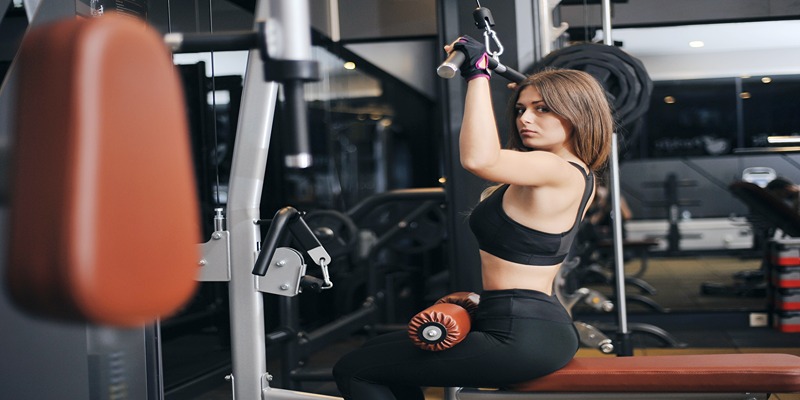Essential Guide to Resuming Exercise Postpartum with Assurance and Vigor
Nov 09, 2023 By Madison Evans
A considerable number of postpartum women are enthusiastic about regaining their pre-pregnancy well-being and physical fitness. The purpose of this article is to provide women who are interested in resuming their exercise regimen after childbirth with a comprehensive guide. We will highlight the benefits of postpartum exercise, the optimal moment to commence, and approaches to customizing a regimen to correspond with your specific requirements. Furthermore, we shall delve into the significance of nutrition and mindset as they pertain to your fitness advancement after giving birth.

Postpartum Exercise Return
The Importance of Postpartum Exercise
Participating in postpartum exercise yields numerous benefits that transcend the mere reduction of postpartum body mass. It is essential for your well-being as a whole. Participating in consistent physical exercise is a highly effective approach to reinstating and augmenting one's physical prowess, psychological welfare, and general vitality.
Additionally, physical activity facilitates the restoration of the pelvic floor and abdominal muscles, both of which may be strained during pregnancy and delivery. It improves blood circulation, which is especially advantageous in the context of childbirth when edema and blood clotting are prevalent complications.
Additionally, during the hectic initial months of parenthood, participating in physical activity subsequent to childbirth serves as a highly effective strategy to mitigate stress and isolate oneself during this precious period. Improving one's self-perception and physical appearance will serve to foster an increased sense of ease and assurance in the transition to the new position.
Timing and Considerations
Before resuming a fitness regimen, it is imperative to contemplate the duration. In order for the body to recover after childbirth, a period of relaxation will be necessary. If you have any concerns regarding the speed at which you can return to work following childbirth, it is recommended that you consult your physician regarding your specific situation.
It is most effective to acclimate oneself progressively and advance at a pace that is predetermined by the individual. Keep an eye out for any indications of fatigue, discomfort, or additional symptoms. Kegel exercises and pelvic tilts are two low-impact exercises that could serve as effective warm-ups. As you advance, progressively increase the intensity of your exercises.
It is critical to bear in mind that each individual's experience as a woman is distinct, and approaches that proved successful for one woman might not be applicable to you. Consider various factors, including your level of physical fitness prior to pregnancy, any complications that may have arisen during childbirth, and your overall health status. Consult with a certified fitness professional for assistance in developing a program that is tailored to your particular objectives.

Crafting Your Post-Baby Fitness Routine
Safe Postpartum Workouts
Prioritize the resumption of all necessary measures prior to exercising again following childbirth. Initiate the regimen with low-impact activities like walking, swimming, or aerobics. Participating in these activities will result in an increased pulse rate without imposing undue stress on your joints.
After giving birth, it is recommended that you give priority to strengthening your abdominal and pelvic floor muscles. This category comprises exercises such as Kegel exercises, mild yoga postures, and pelvic tilts. In addition to promoting recovery and preventing urinary incontinence and other complications, these exercises may aid in their prevention.
Tailoring Exercises to Your Needs
In light of the considerable diversity in postpartum experiences among mothers, it is imperative to appropriately modify one's exercise regimen. Consider variables including your daily schedule, physical health, and any complications encountered during pregnancy or childbirth. It is of the utmost importance for new mothers with limited time and energy to select regimens that yield optimal results while requiring minimal physical effort. Be conscious of your physical condition and adjust as needed. It is recommended to consult a trainer for an alternative exercise if the physical activity induces pain or discomfort. As your strength and stamina increase, increase the duration and intensity of your activities progressively.
Incorporating Cardio and Strength Training
The benefits of cardiovascular exercise include the facilitation of calorie expenditure and the enhancement of cardiovascular well-being. Start with exercise sessions that are more manageable and succinct, and progressively prolong them as your physical fitness progresses. Illustrative instances of physical activity include swimming, stationary cycling, and moderate strolling. The cultivation of lean muscle mass through strength training is essential for increasing one's metabolic rate. Commence by concentrating on main muscle groups with resistance bands or moderate weights, such as the legs, arms, and core. One can optimize their strength training regimen by acclimating to a progressively more challenging regimen.
Navigating Common Challenges
Dealing with Postpartum Recovery
A substantial objective is the restoration of one's physical condition subsequent to childbirth. It is imperative to allow adequate time for the body to recover from the substantial changes that have occurred. One should refrain from exerting any form of pressure on the outcome; instead, contemplate the passage of time.
Participate in diaphragmatic breathing, a low-intensity exercise that stimulates blood circulation and muscular relaxation, thereby facilitating an expedited recuperation. Engaging in pelvic floor exercises has the potential to bolster the muscular strength that provides support to the organs of the pelvis.
It is imperative to remain vigilant for any indications of pain or distress while participating in physical activities. Obtain a medical assessment in the event that the pain persists. They will offer support in the management of any postpartum complications and guarantee the well-being of your exercise regimen.
Managing Fatigue and Time Constraints
Physical activity may be difficult for new mothers to incorporate into their hectic schedules as a result of the responsibilities of their role. It is acceptable to increase the intensity of exercise gradually. Regular, short workouts may be equally as beneficial as lengthier ones.
Make the most of your infant's sleeping periods by participating in physical activity during those times, or integrate them into your personal exercise routine. Incorporating baby-friendly yoga positions into a carriage journey is one such method.
Make slumber and self-care your highest priority. Consistent nutrition and adequate rest are essential for preventing fatigue and supplying the energy required to participate in physical activity. When you are unable to complete a workout, avoid being overly critical of your performance. The long-lasting dependability is of greater importance than immediate flawless performance.
Mindset and Motivation
Staying Positive and Patient
When striving to restore physical fitness following childbearing, it is essential to maintain an optimistic mindset. Recognize that notwithstanding the incremental nature of progress, each minor stride makes a positive contribution. Focus on the advancements that are contributing to your physical and mental well-being, and derive satisfaction from these accomplishments. Demonstrate self-control in both your behavior and emotions. The individual's body has recently experienced considerable physical stress, necessitating a phase of restoration and adjustment. It is recommended that individuals confronted with comparable circumstances abstain from making comparisons to the experiences of others. It is essential to keep in mind that regaining physical fitness following labor is a personal endeavor in which exerting one's utmost effort is adequate.
Setting Realistic Goals
Sustaining motivation becomes considerably easier when one sets attainable objectives. Formulate initial objectives that are feasible and consistent with your present capabilities and way of life. Participate in a daily exercise regimen for a duration of 15 minutes, or progressively augment your step count until you attain 10,000 steps. In order to reach a 5K run or any other fitness milestone, it is necessary to set and achieve a series of progressively lesser objectives. In order to guarantee accurate monitoring of one's progress, it is critical that objectives are specific, measurable, and time-bound.
Conclusion
It is critical to bear in mind that your pursuit of postpartum fitness entails much more than mere modifications to your physical appearance. It provides an opportunity to heed one's personal requirements and prioritize physical and emotional well-being as a new mother. Recognize the personal importance of your journey and exhibit self-compassion. Postpartum recovery of physical fitness can be accomplished through the implementation of safe exercise practices, adherence to a structured routine, and the maintenance of an optimistic perspective. As you confront the challenges that lay ahead, maintaining consistency is more crucial than pursuing precision. Embrace one's accomplishments and recognize the strides being made in the direction of self-development, overall welfare, and individual satisfaction.
-
 Sep 26, 2023
Sep 26, 2023Discovering Natural Ways to Kick the Smoking Habit
This article provides a comprehensive guide on natural and holistic strategies to quit smoking, highlighting the role of mindfulness, planning, and social support.
-
 Nov 04, 2023
Nov 04, 2023Why Is There Blood in My Urine?
Learn about Hematuria, its common causes, symptoms, and available treatments. Don't ignore signs of blood in your urine; get informed and take action.
-
 Nov 06, 2023
Nov 06, 2023Combat Anxiety and Depression Through Physical Activity
Looking to treat your anxiety or depression? Exercise may be the answer! Learn how specific exercises can help relieve symptoms of anxiety.
-
 Nov 02, 2023
Nov 02, 2023Unlocking the Benefits of Dry Brushing: A Comprehensive Guide
Discover the art of dry brushing for radiant skin and improved well-being. Learn the right technique and reap its countless benefits.
